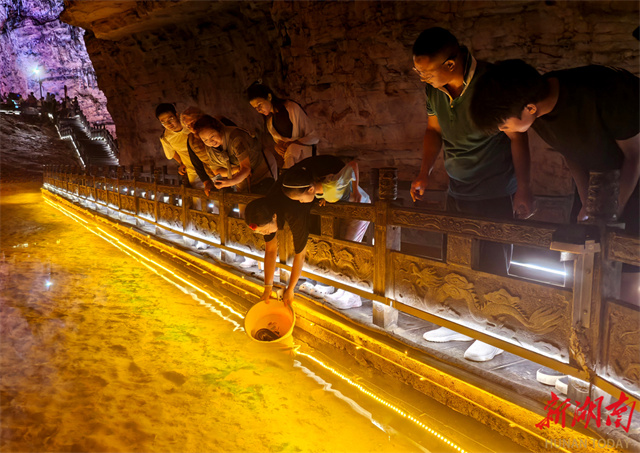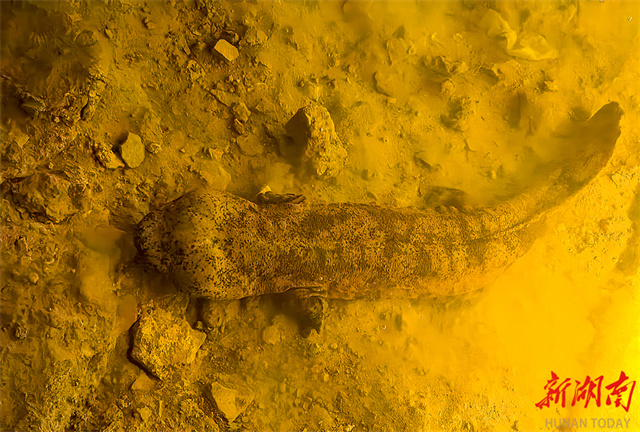
On August 20, an artificial enhancement and release activity was held again at the Huanglong Cave Observation Station of the Zhangjiajie Chinese Giant Salamander National Nature Reserve in Hunan Province (hereinafter referred to as the Huanglong Cave Chinese Giant Salamander Observation Station). Under the guidance of researchers, more than ten teenage volunteers released over a hundred artificially-bred young Chinese giant salamanders into a stream. Carrying the mission of ecological restoration, these Chinese giant salamanders would embark on a new journey of returning to nature.

The Chinese giant salamander, commonly known as the "wawayu or babyfish," is an ancient species that dates back to the Jurassic period. This creature has extremely high requirements for its living environment and water quality, earning it titles such as "a living fossil in water" and "an ecological indicator." It is under second-class state protection in China, and also known as the mascot of Zhangjiajie. Moreover, the Chinese giant salamander is the protagonist of the immersive naked-eye 3D live-action show "The Chinese Giant Salamander Transformed into a Dragon," which was produced by the Huanglong Cave Scenic Area.

The water system of Huanglong Cave consists of underground rivers inside the cave and streams outside the cave. The sources of outside streams come from underground rivers. As the water undergoes multiple layers of filtration, it remains exceptionally clean, at a stable cool temperature. Additionally, the abundant food organisms make the cave an ideal habitat for Chinese giant salamanders to thrive and reproduce. As a result, this area has long been a traditional habitat for wild Chinese giant salamanders. Through repeated artificial enhancement and release efforts, the population of Chinese giant salamanders in the water system of Huanglong Cave has significantly recovered and increased. Currently, stable Chinese giant salamander populations have been bred both in the underground rivers inside the cave and the streams outside it. Some tourists are lucky to encounter these fascinating creatures unexpectedly during their visits.

The Huanglong Cave Chinese Giant Salamander Observation Station has set up two observation sites--the Longquan Stream outside the cave and the Xiangshui River Wharf inside the cave. Both sites are open to domestic and international visitors free of charge throughout the year.
This article is from the Hunan Provincial Government www.enghunan.gov.cn.
Translator: Xiao Juan
Chinese source: hunantoday








